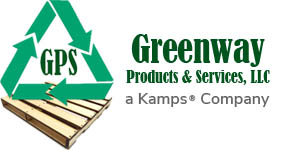Are children in your community having fun at playgrounds that use wood mulch? That’s a critical question since studies have found that mulch made from rubber, especially rubber tires, can be harmful to kids. Recycling tires for playground mulch was a popular solution to the growing pile of tires accumulating in landfills for the past several decades. Toxic fires were being attributed to old tires, as well as chemical leaching into water supplies, thought to be contributing to toxic environmental pollution.
Today, problems are starting to surface arising from the use of ground rubber tires in playgrounds. The healthy, safe and natural alternative to rubber mulch for playground use is wood much. Experts recommend using wood instead of recycled tires as playground mulch to keep children safe and healthy. A Yale University chemical analysis found that rubber tires pose health risks when used as mulch.
According to the National Program for Playground Safety (NPPS) nearly 70% of all playground injuries are related to falls to the surface. To mitigate falls, experts recommend using loose-fill materials. Acceptable loose-fill materials include:
- Hardwood wooden fiber, or wood mulch
- Wood chips
Wood Mulch the Better Choice for Playgrounds
1. Wood mulch is a budget friendly alternative playground mulch for schools and municipalities. 
2. Environmentally friendly recycled wood from trees decomposes naturally adding nutrients to the soil. Rubber mulch breaks down over time, causing the chemicals in the rubber to leach into the soil and groundwater. Rubber also creates a surface powder which can easily become air born. Children are exposed to the powder where they are running, playing, sitting and breathing. The black dust is often visible on children’s clothes, skin and in the air. According to Environment and Human Health, Inc. (EHHI) that black dust is a potential cancer concern for anyone breathing it in or coming into contact with it.
3. Yale’s study of playground mulch made from tires shows 20 irritants which are found to cause everything from mild irritation to skin or eyes, asthma, wheezing, coughing, general lung irritation, to central nervous system damage, liver and kidney toxicity, damage to unborn children, danger to aquatic animals, and warrants further investigation.
4. The Yale study shows 12 known carcinogens in rubber tire mulch.
5. Many states require a permit to transport and dispose of rubber tires. These hazardous tires are then ground and sold to schools, gardeners, and municipalities for use as playground and landscaping mulch. In addition to health concerns, the permitting process adds to the cost of using rubber tire mulch. Experts support the use of less expensive, easier to obtain wood mulch.
6. Wood mulch is natural, uses old or damaged trees*, that haven’t been chemically or heat treated and provides a safe, shock-absorbing and environmentally-friendly surface that everyone expects for their children’s playgrounds.
7. Wood mulch provides nutrients to the soil when it breaks down during decomposition, while rubber only provides toxic chemical dust and debris.
8. When heated by the sun wood mulch emits a natural tree smell, which is not harmful. Rubber emits toxic gasses into the air when hot, creating airborne pollutants around playgrounds filled with tire mulch.
*Greenway Products and Services, LLC, grinds discarded pallets into wood mulch as well.
Concern for Health and Safety
Many parents have expressed concern about toxic chemicals and carcinogens found in their children’s playground mulch. They have formed advocacy groups to educate the public about wood vs. rubber mulch for use in playgrounds and other public places. (see Advocacy Facebook Page on banning rubber mulch.) Follow investigative news stories like the ones found on both the ABC and NBC news networks.
U.S. Consumer Product Safety Commission’s Public Playground Safety Handbook Loose-fill Material Tips
- Loose-fill materials will compress at least 25% over time due to use and weathering. This must be considered when planning the playground. For example, if the playground will require 9 inches of wood chips, then the initial fill level should be 12 inches. See Table below.
- Loose-fill surfacing requires frequent maintenance to ensure surfacing levels never drop below the minimum depth. Areas under swings and at slide exits are more susceptible to displacement; special attention must be paid to maintenance in these areas. Additionally, wear mats can be installed in these areas to reduce displacement.
- The perimeter of the playground should provide a method of containing the loose-fill materials.
- Consider marking equipment supports with a minimum fill level to aid in maintaining the original depth of material.
- Good drainage is essential to maintaining loose-fill surfacing. Standing water with surfacing material reduces effectiveness and leads to material compaction and decomposition.
- Critical height may be reduced during winter in areas where the ground freezes.
- Never use less than 9 inches of wood loose-fill material. Shallower depths are too easily displaced and compacted.
- Wood mulch containing chromated copper arsenate (CCA)-treated wood products should not be used; mulch where the CCA-content is unknown should be avoided.
Minimum compressed loose-fill surfacing depths
| Inches | Type of Loose-fill Material | Protects to Fall Height (feet) |
|---|---|---|
| 9″ | Wood mulch (non-CGA) | 7′ |
| 9″ | Wood chips | 10′ |
Greenway Products and Services, LLC offers an extensive mulching program to our customers. We believe in reduce, re-use and recycle. We use the wood from discarded pallets, scrap lumber and shipping crates and turn it into wood mulch. Yale’s study of rubber mulch enlightens town managers, school personnel and parent volunteers who build playgrounds about the dangers of ground rubber tires. Wood mulch is natural and safe and a better alternative to rubber in playgrounds, parks and other public places.




Leave A Comment